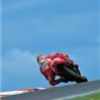MANY SCHOOLS offer intensive courses, which last anywhere between three and six days. Before the new testing system, ‘crash’ courses, as they’re sometimes called, were a prompt and popular way of gaining a full licence, but with the introduction of the two-part practical courses like these may become a thing of the past.
Article originally published July 2011, updated July 2013
Unless you’re super-confident, we’d strongly recommend taking Modules 1 and 2 on separate days. This way, if the worst happens and you flunk Module 1, you won’t lose your test fee for Module 2, as you can’t take Module 2 without passing Module 1.
Everything contained in Module 1 and 2 your instructor should cover during training, so there should be no nasty surprises when test time arrives. Practise is the key to test success. The more time you spend in the saddle, practising the manoeuvres expected of you by the examiner, the easier you’ll find the test.
Avoid test route mentality by riding in areas away from designated test routes. Many candidates believe if they learn all the test routes parrot fashion then they stand a better chance of passing. My experience shows that candidates who learn to ride confidently on a variety of roads away from test areas stand a better chance of test success. Remember, a full motorcycle licence allows you to ride anywhere in the world – not just your local test routes.
Only apply for Module 1 or 2 when your instructor thinks you’re ready. Avoid jumping the gun just because you’ve got a shiny new bike parked in the garage. Listen to your instructor, as they will know from experience when you’re ready for the practical test.
Avoid practising too much on the day of your test; a 20-30 minute ride prior to the test is all you need to settle the nerves. Don’t overdo it.
If you make a mistake during the test then put in behind you and get on with the job in hand. I’ve seen people give up because they thought they’d failed for a minor fault partway through, when it turns out they would have passed if they’d continued. Keep going no matter what.
Whether you’re taking Module 1, Module 2 or even both it’s essential to remember that the examiner only wants to see you can ride to the required standard. Examiners are not looking for a superhuman performance, nor are they looking for a totally faultless ride – although that would be preferable. Examiners are just everyday people, like you and me, who enjoy passing candidates rather than revelling in their failure. Contrary to popular belief, examiners do not have a fail quota to fulfil. They would much rather say goodbye to a happy, smiling success than consoling a despondent failure.
Top tips for U-turns
- Ride forward 10-15ft before initiating the turn to prevent wobbling
- Look to where you want to go – avoid staring at the kerb
- Use the back brake to control your speed, rather than the clutch
Top tips for Emergency Stops
- Approach the examiner at a steady speed
- Progressively increase the braking force to prevent skidding
- Leave the clutch engaged until the last minute
Visordown’s Top Tips for Test Success
- Take as much post CBT training as possible
- Consult your instructor before booking your test
- Avoid a ‘big night’ prior to the test
- Swot up on your highway code
- Remember all your documents (put them in an envelope)
- Arrive at the test centre a little early
- Avoid too much practise beforehand – 30mins max
- Listen to the examiner, smile, be polite – avoid trying to make friends
- If you make a mistake then carry on as normal – do not give up
Part 6: Theory test | Part 8: The right kit
How much will it cost?
New licence application - £50
Theory test - £31
Hazard Perception test - £15
CBT - £80 - £150
Module 1 - £10 weekday or weekend
Module 2 - £70 weekday £82 evening or weekend

